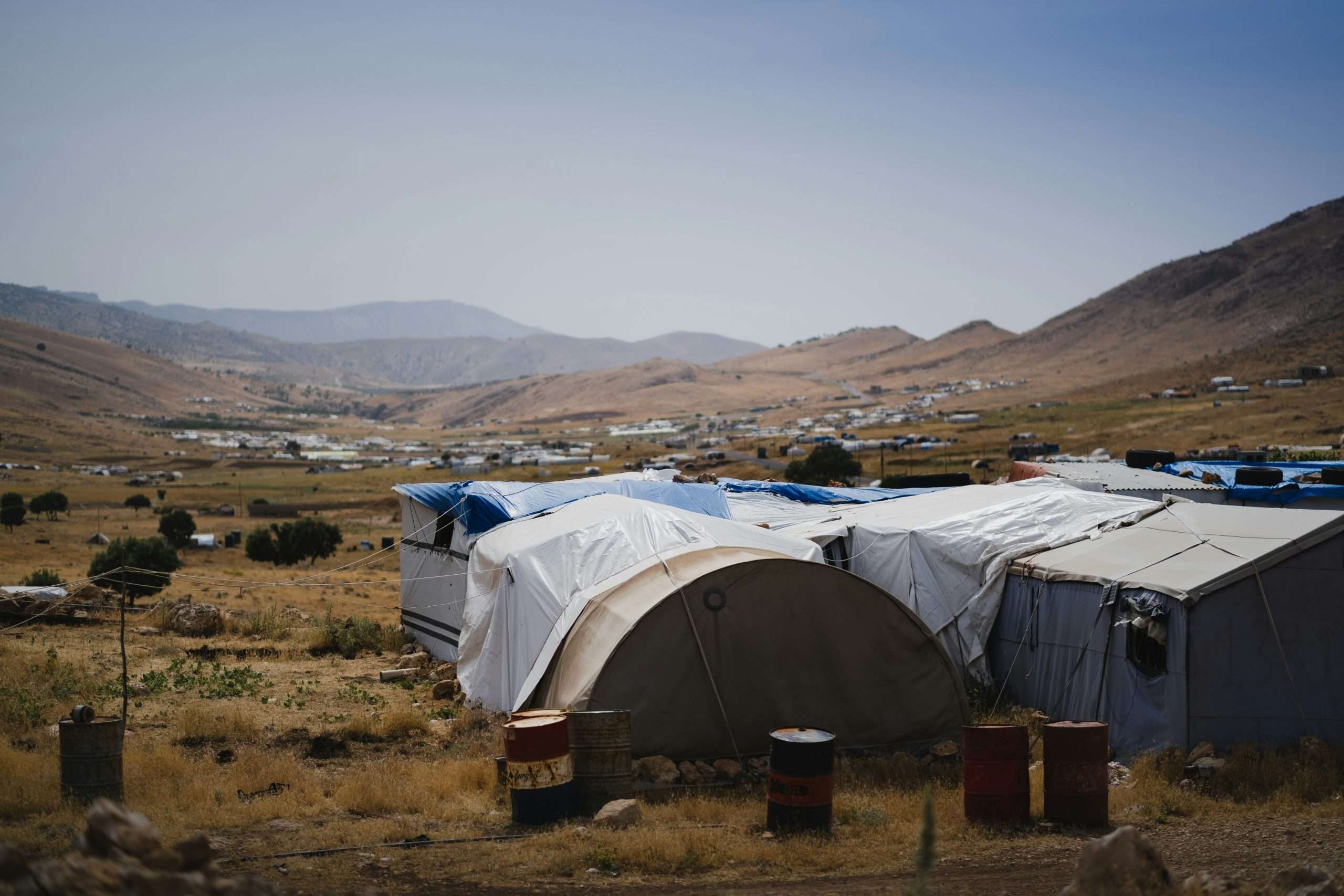
To mark World Refugee Day, celebrated annually on June 20, we’re highlighting the role that government entities can play in supporting and providing services to internally displaced persons (IDPs), showcasing promising approaches to managing IDPs in fragile contexts and how we might incorporate development solutions for IDPs into our work.
The level of conflict-induced displacement is currently the highest in modern history with a record 114 million forcibly displaced persons worldwide, of which nearly two-thirds (71.1 million) are internally displaced. While more countries are implementing policies and establishing governing bodies to manage and provide services to internally displaced persons (IDPs), these entities often do not have the capacity and, in some cases, the political will to effectively support them. This is particularly the case if the government is party to the conflict and responsible for perpetrating violence that contributed to displacement. At the same time, there is a growing recognition that large-scale displacement is a development challenge, not just a humanitarian one. Securing development solutions to effectively respond to displacement is one essential component that contributes to stability in fragile and conflict-affected environments.
To understand the role that government entities play in supporting IDPs, we compare two differing governance approaches: Iraq and Ukraine. While the former has navigated high levels of protracted internal displacement through successive conflicts, the latter that is just beginning to establish a governing framework for managing IDPs while war continues to ravage the country. Based on these case studies, we provide recommendations on how international development actors can support government entities to foster inclusion, bolster IDPs’ ability to thrive in the communities that have welcomed them, and prevent fragility and conflict from displacing more populations globally.
In the mid-2010s, Iraq was faced with another catastrophic displacement crisis with an estimated three million Iraqis internally displaced due to the military campaign against the Islamic State of Iraq and Syria (ISIS). While the campaign in Iraq ended seven years ago, more than 1 million IDPs remain displaced. The nature of Iraq’s IDP crisis has shifted from the rapid, overwhelming humanitarian crisis that it was from 2014-2017 to a protracted challenge to rebuild destroyed communities and successfully reintegrate the remaining IDPs, a quarter of whom are still in camps and temporary shelter conditions.
Despite the high number of IDPs who remain displaced, the Government of Iraq has made progress toward facilitating their safe return with the help of multilateral and bilateral support. The Government of Iraq’s interministerial initiatives to facilitate reintegration have led, in part, to bringing about the peaceful return of millions displaced from their homes. In 2018, the Government of Iraq first gathered more accurate data on IDPs by disaggregating census data by displacement status. The Ministry of Migration and Displacement uses this data to maintain a registry of IDPs, and this data also helps the Government of Iraq track displaced children to support their continued education. Given the links between education and conflict prevention, this is a priority service to maintain.
However, reintegration challenges plague many of those who have already returned home, impacting community cohesion and threatening secondary displacement for some. From lack of official documentation to the stigma of being associated with ISIS to competing government service priorities, fostering inclusive return of displaced populations has proved challenging in some parts of Iraq. However, the Government of Iraq must sustain services to IDP communities and prioritize grassroots leadership to foster inclusive return — which DT Global’s experience supporting diverse, community-led Crisis Committees indicates is crucial for overcoming barriers to inclusion. Growing instability in the Middle East and the risk it poses for renewed violence in Iraq creates an urgent need to refocus efforts on governance solutions to foster stability.
As the war in Ukraine continues nearly two-and-a-half years since the Russian invasion, close to 4 million Ukrainians have been forcibly uprooted from their homes, nearly all of whom have been displaced for more than a year. Early in this conflict, the Ukrainian government sought to develop a structured, institutionalized approach to addressing its internal displacement crisis.
Drawing on policies and government institutions established after the first Russian invasion and occupation of Ukrainian territory in 2014, the Ukrainian government built a legal framework for the management, assistance, and monitoring of resources for IDPs. In September 2023, the government adopted legislation to establish the minimum living standards for collective sites, which it defines as “temporary residences”, for IDPs. These standards include basic engineering, sanitation, and hygiene requirements that facilitate proper living conditions for those displaced. This legislation also allows for the Ministry of Reintegration of the Temporarily Occupied Territories of Ukraine — established in 2016 after the Russian occupation of Crimea — to monitor the status of collective sites, their safety, the makeup of their inhabitants, their existing capacity, and other essential service needs.
In addition to providing top-down support for IDPs, the Ukrainian government has also shifted some planning, prioritizing, and decision-making authority to IDPs themselves in the form of IDP councils. These councils, comprised of IDPs in collective sites that they represent, are designed to not only help channel resources to collective sites in a way that is more responsive to IDP needs, but also help maintain a degree of structure and peaceful cohesion of communities in which collective sites exist. By establishing top-down and bottom-up mechanisms for IDP support, the Government of Ukraine is prioritizing service delivery to IDPs and facilitating inclusion between IDPs and their host communities, both of which are key to recovery and community resilience.
Based on our high-level comparison of governance approaches to IDPs, we offer the following recommendations for the international development community to take into consideration as we seek to support government counterparts in inclusive governance for IDPs: